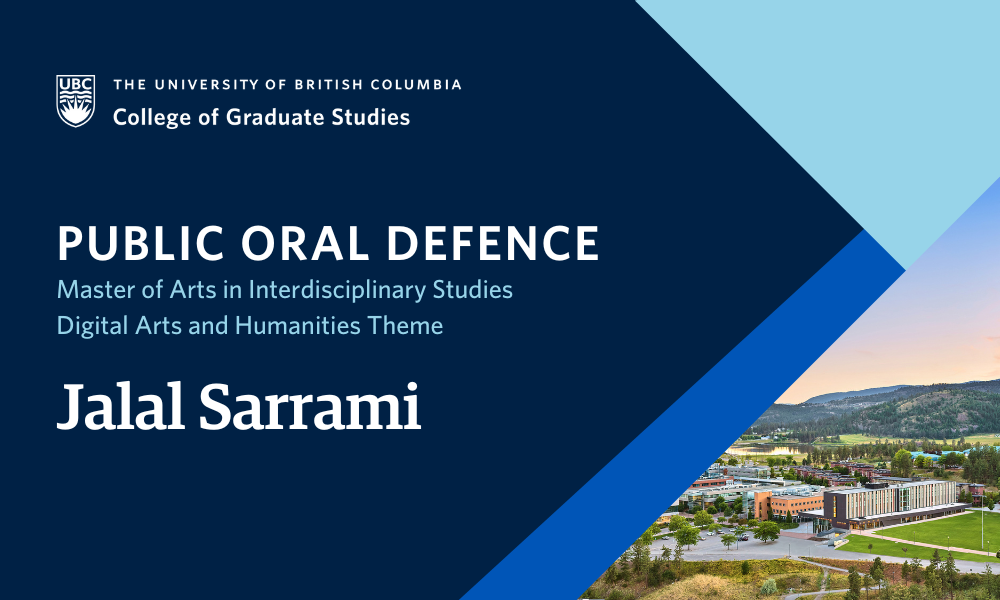
- This event has passed.
Thesis Defence: Digital Echoes of Ancient Gardens: Exploring Persianate Pigeon Towers’ Role in Agriculture and Heritage through Three-dimensional Modeling
April 24 at 9:00 am - 1:00 pm

Jalal Sarrami, supervised by Dr. Hussein Keshani, will defend their thesis titled “Digital Echoes of Ancient Gardens: Exploring Persianate Pigeon Towers’ Role in Agriculture and Heritage through Three-dimensional Modeling ” in partial fulfillment of the requirements for the degree of Master of Arts in Interdisciplinary Studies – Digital Arts and Humanities theme.
An abstract for Jalal Sarrami’s thesis is included below.
Defences are open to all members of the campus community as well as the general public. Registration is not required for in person defences.
ABSTRACT
This thesis delves into the significance of pigeon towers within Persianate gardens and agriculture, with a particular focus on the Mardavij pigeon tower in Hezār Jarib garden, Isfahan. It addresses gaps in English-language scholarship and the underutilization of digital methodologies, underscoring the towers’ roles in boosting agricultural productivity through pigeon manure and reflecting socio-political power. Employing digital arts and humanities methods, including three-dimensional modeling, alongside traditional architectural and historical analyses, the study offers a detailed examination of these structures. The findings illustrate the crucial role pigeon towers played in promoting sustainable agriculture in Persianate societies by providing valuable fertilizer, thereby linking architectural innovation with environmental stewardship. Additionally, the towers were contextualized within broader socio-political and economic frameworks, indicating their role in symbolizing and facilitating power dynamics, wealth, and social hierarchy. The research on the Mardavij pigeon tower, which incorporates digital reconstruction and historical textual analysis, unveils the tower’s complex design that merges functionality with aesthetic and cultural values, enhancing the garden’s utility and its representational significance. This approach not only enriches understanding of Persianate garden architecture but also advocates for the conservation of such heritage sites, stressing their relevance to contemporary discussions on sustainability and environmental guardianship. Key insights emphasize the value of integrating traditional knowledge systems into present-day sustainability practices. Advocating for the preservation of Persianate gardens and pigeon towers as sources of ecological insight, the study highlights the potential of ancient agricultural techniques to inform sustainable practices today.